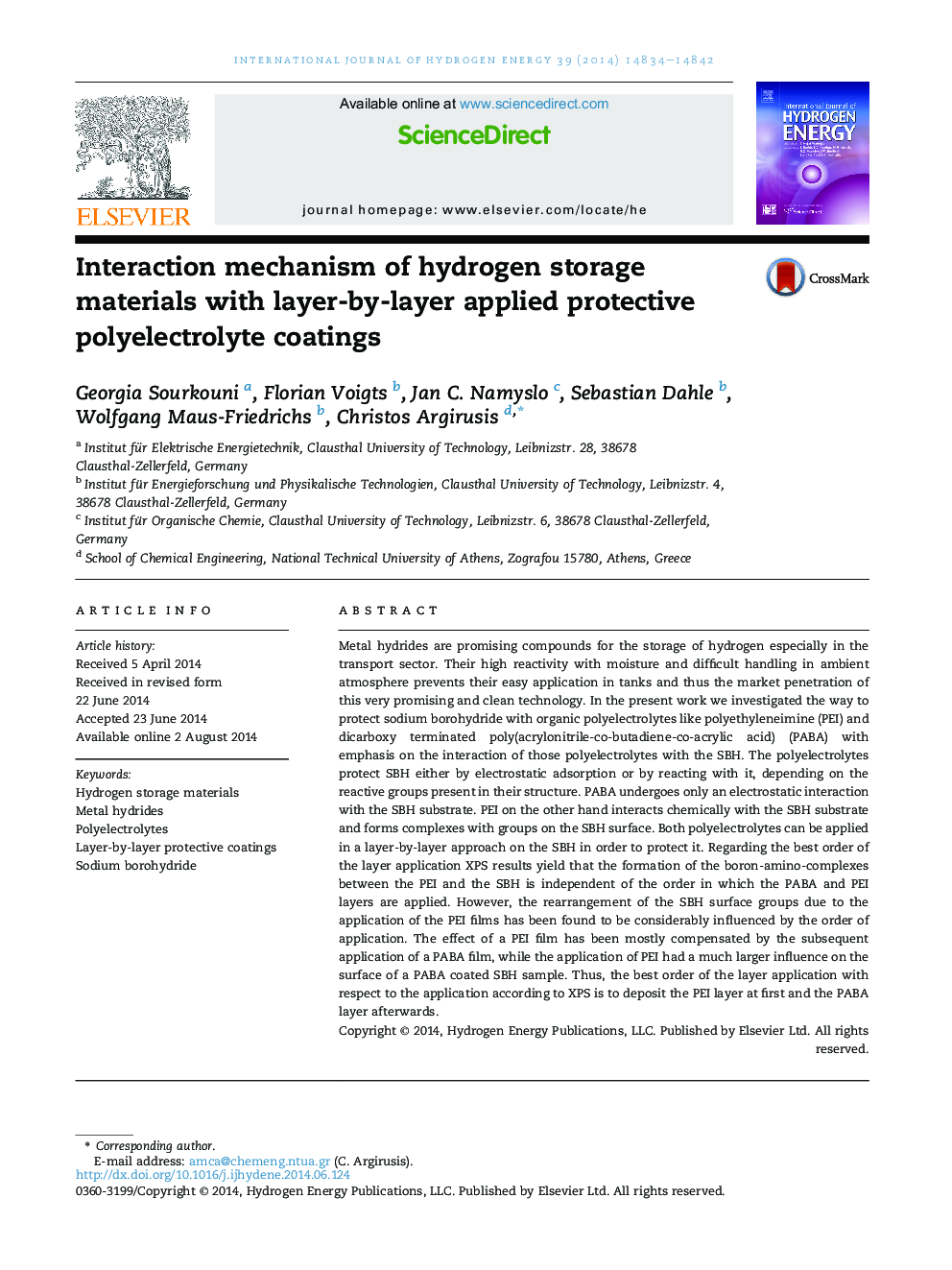| Article ID | Journal | Published Year | Pages | File Type |
|---|---|---|---|---|
| 7718074 | International Journal of Hydrogen Energy | 2014 | 9 Pages |
Abstract
Metal hydrides are promising compounds for the storage of hydrogen especially in the transport sector. Their high reactivity with moisture and difficult handling in ambient atmosphere prevents their easy application in tanks and thus the market penetration of this very promising and clean technology. In the present work we investigated the way to protect sodium borohydride with organic polyelectrolytes like polyethyleneimine (PEI) and dicarboxy terminated poly(acrylonitrile-co-butadiene-co-acrylic acid) (PABA) with emphasis on the interaction of those polyelectrolytes with the SBH. The polyelectrolytes protect SBH either by electrostatic adsorption or by reacting with it, depending on the reactive groups present in their structure. PABA undergoes only an electrostatic interaction with the SBH substrate. PEI on the other hand interacts chemically with the SBH substrate and forms complexes with groups on the SBH surface. Both polyelectrolytes can be applied in a layer-by-layer approach on the SBH in order to protect it. Regarding the best order of the layer application XPS results yield that the formation of the boron-amino-complexes between the PEI and the SBH is independent of the order in which the PABA and PEI layers are applied. However, the rearrangement of the SBH surface groups due to the application of the PEI films has been found to be considerably influenced by the order of application. The effect of a PEI film has been mostly compensated by the subsequent application of a PABA film, while the application of PEI had a much larger influence on the surface of a PABA coated SBH sample. Thus, the best order of the layer application with respect to the application according to XPS is to deposit the PEI layer at first and the PABA layer afterwards.
Related Topics
Physical Sciences and Engineering
Chemistry
Electrochemistry
Authors
Georgia Sourkouni, Florian Voigts, Jan C. Namyslo, Sebastian Dahle, Wolfgang Maus-Friedrichs, Christos Argirusis,
